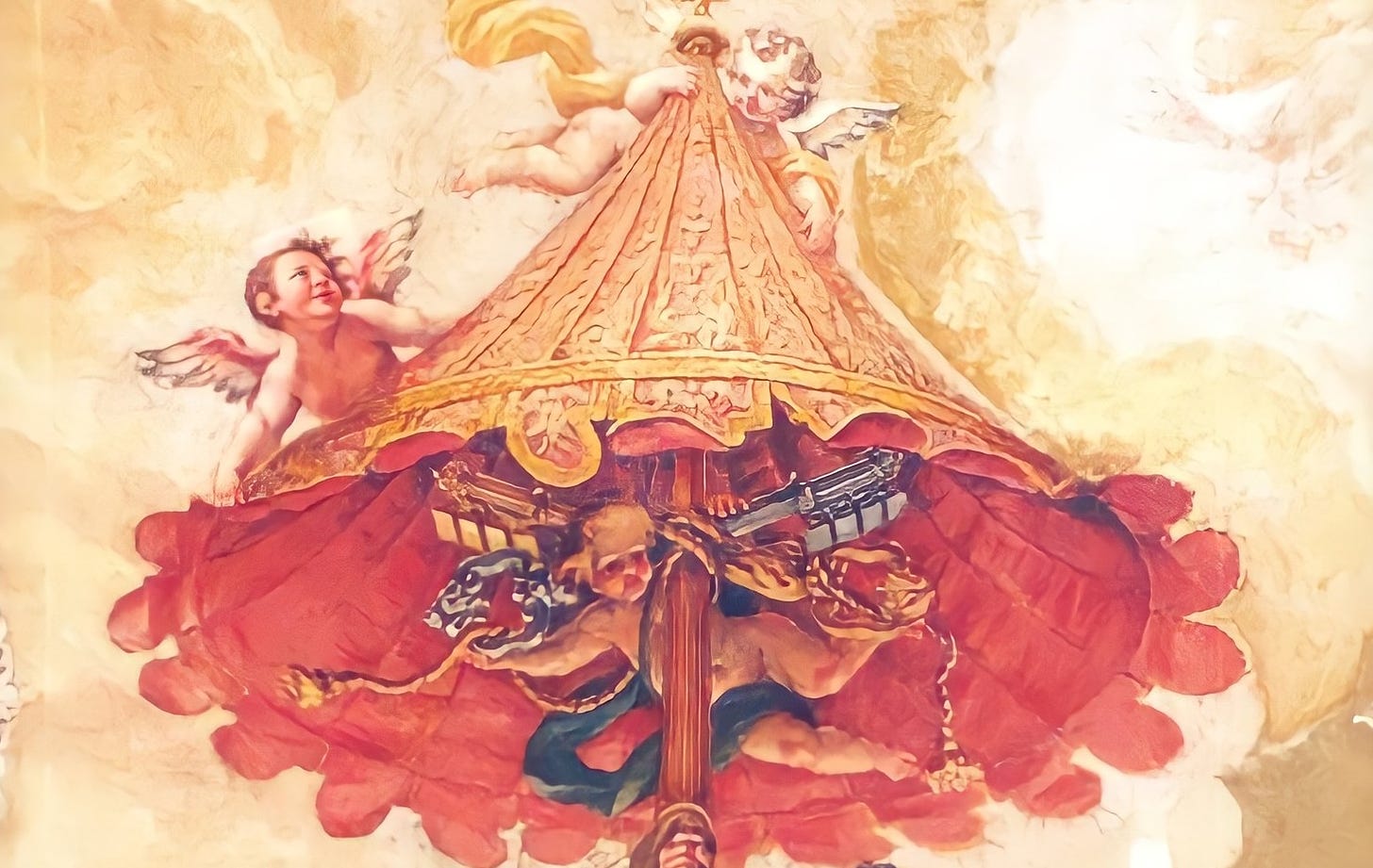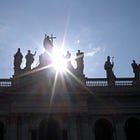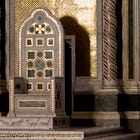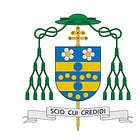On the 'sede vacante' thesis: James Larrabee answers the objections
For decades, the same arguments against sedevacantism have appeared again and again. But the answers have been around just as long.

For decades, the same arguments against sedevacantism have appeared again and again. But the answers have been around just as long.
Editors’ Notes
Below is a letter written by Mr James Larrabee for the sake of the late Fr Nicholas Gruner, through a mutual contact. It was first published in 2006 and has been available in various places ever since.
This article addresses very many objections commonly raised to the conclusion that the recent claimants to the papacy have not been valid or legitimate popes.
One interesting feature of the letter is that it addresses arguments around the failure of the papal claimants to accept the election and the office – which is one of the arguments taken up recently by Archbishop Carlo Maria Viganò.
This argument is often cited by adherents of the “Cassiciacum Thesis” of the Mgr Guérard des Lauriers – but as we can see from this letter, this argument is by no means the “property” of those adherents, and by no means necessitates their conclusions.
It seems possible that this is the sort of thing that Viganò has been reading, and may serve as a helpful guide for some of his admirers, as it explains some of the ideas that he seems to hold, but has not yet thought fit to express.
We are re-publishing this letter with the author’s permission, along with a new preliminary note, translations and comments. We have added some line breaks, headings and a few links to other articles.
Preliminary Note
James Larrabee (2024)
I should alert the reader to the fact that I have given little attention, apart from a passing mention or two, to Bellarmine's argument from authority (i.e., from Revelation). I don't recall just why, but perhaps I felt the need to keep the length of my essay down to something Fr. Nicholas Gruner, its intended recipient, would be likely to read.
I believe he would have taken in the significance of my brief mentions. At any rate, this is a crucial argument, the first prong in Bellarmine's presentation, which deserves a systematic exposition. Of course, one may read it in the holy Doctor's text or the now available translations, though his usual concision might need expansion for the unprepared reader.
Letter for Fr Gruner
James Larrabee
Ray,
Thanks a lot for your message. Here’s some comments on the thesis of St. Robert Bellarmine that you could pass on to Fr. Gruner.
There are many particular objections which have been made against the so-called “sedevacantist” thesis, which is simply that of St. Robert Bellarmine, of the other Doctors of the Church, and of canon law itself. Generally speaking, these objections are not difficult to answer. It should be enough for any Catholic to know that they are contrary to the common teaching of the Church. But they can be refuted by arguments as well. The objections to St. Robert Bellarmine seem to arise from a failure to accept or understand the visible unity of the Church, as has always been held by the Church against the Protestants.
St Robert Bellarmine and the visible Church
The position of St. Robert arises by simple logic from his definition of the Church as a visible institution. As such, it must have a visible membership, distinguishable from other men by visible (perceivable) means. The Church is a visible unity of faith. One who departs from that unity by a perceivable rejection of her teachings (a heretic), by this very fact ceases to belong to that unity, by his own act.
This position is taught clearly by the Popes. First of all, Bellarmine has been made a Doctor of the Church by them, and he is probably the leading theological authority on the Church and the papacy since the Reformation, whose errors he dedicated himself to refuting. Thus his teaching is recognized as solidly Catholic, on the highest authority. It is borne out both by the legal sources cited by St. Robert Bellarmine in the chapter on a heretical Pope (in the text “Si papa”), and by the Code of Canon Law (1917). Canon 188 clearly states,
“Ob tacitam renuntiationem ab ipso iure admissam quaelibet officia vacant ipso facto et sine ulla declaratione, si clerus … (4) a fide catholica publice defecerit.”
"Any and all offices become vacant by a tacit renunciation accepted by the law itself, if a cleric ... (4) publicly defects from the Catholic Faith."
This canon is based in part on the constitution of Pope Paul IV, Cum ex Apostolatus, which clearly teaches that no office can be held by a manifest heretic, and that if a man is a manifest heretic before being elected Pope (as well as any other office), the election is void, even if (as he explicitly states) the whole Church should recognize him as Pope.
In addition, Bellarmine’s doctrine on the membership of the Church is the basis for the presentation in Mystici Corporis. There, four requirements for membership are given: those who are baptized, who profess the Faith integrally, who submit to the lawful authority of the Pope and hierarchy in communion with him, and who have not been excluded from the Church by excommunication. Thus, heretics, schismatics, infidels, and excommunicates are excluded from the Church, even though they are baptized. Heretics and excommunicates are two different categories. In the case of the former (and schismatics as well), they are excluded by their own actions; in the case of excommunicates, they are excluded by the Church’s judgment, in punishment of crimes committed.
Those who claim, by whatever reasoning, that John Paul II is truly Pope, implicitly accept that the Church has no visible unity in faith. They accept as members of the Church not only him, but all the bishops in his communion, and all those who openly reject both the teachings and the authority of the Church, none of whom, or virtually none, have been excommunicated. Thus they deny, in effect, the unity of the Church. The Abbé de Nantes1 has no difficulty admitting that Paul VI and John Paul II are heretics, as well as schismatics, apostates, and scandals, and he proves this abundantly, but he still claims that they remain members of the Church. This is to deny the teaching of the Doctors, the Popes, and canon law itself. It is to reduce the Church to a mere political unity, like the Protestants, who have no unity of faith at all, even within a single sect.
Can we judge?
It is argued that we “cannot judge.” But a heretic is one who is self-judged, and who has left the Church by his own action. It is a visible fact that he is not a member. To observe and state this fact is not to “judge” in a legal sense, any more than to observe that someone is dead. In Scripture and the law of the Church, we are gravely obliged to avoid heretics. This would largely be impossible if it were restricted only to individuals formally condemned by name by the Holy See, and there is no basis in the tradition of the Church for this view.
The Abbé de Nantes seems to argue that the teaching of Bellarmine no longer applies. (Why, he does not say.) If this argument is based on the reasoning that there isn’t a specific provision in the 1917 Code, nevertheless it comes under canon 188:4, as stated above. Furthermore, Bellarmine answers similar arguments by saying that the conclusion arises from the very nature of the Church and of heresy, as shown by the citations from the Fathers which he gives. It is not a matter of human positive law.
De Nantes further argues that disorders would arise if every “Tom, Dick and Harry” were able to challenge the Pope for heresy. This seems a frivolous objection. First of all, only in the rarest of instances has a Pope ever been accused of heresy, and even more rarely has one given reasonable grounds for such an accusation. (For example, Liberius, Honorius, and John XXII.) And it seems unthinkable that a particularly large number of people could ever be brought to do so; far more likely that, as at present, a manifestly heretical Pope could draw the bishops and many of the people over to his heresy. This is an incomparably worse situation than any conceivable alternative, and it is exactly the reality now. If Montini had been openly challenged as a non-Pope back in 1964, when he issued “Ecclesiam Suam,” it hardly seems that the conciliar revolution (or new Reformation) could have taken place. It seems absurd to hold imaginary disorders up against the total chaos we see as a result of De Nantes’ error.
Secondly, if the conclusion arises from the nature of the Church and jurisdiction, no consideration of consequences can be relevant. This objection seems to arise from Bouix and John of St. Thomas, who hold that a heretical Pope retains his office. Their opinion has been rejected by all other canonists since the time of Bellarmine, as well as most of them before, so this ought to be a moot opinion.
Is a legal process required?
It is also objected (by De Nantes and others) that some legal process is required, before the Pope actually loses office. This seems to imply the grave error of conciliarism. If a council, or any other authority in the Church below the papacy, can carry out a legal action resulting in the Pope’s deposition, no matter how explained, it is clear that they are superior to him. Cajetan, who argued this, tried in vain to reconcile it with the Pope’s supremacy (which he also firmly maintained). St. Robert Bellarmine refutes his arguments convincingly, and the arguments of John of St. Thomas, attempting to defend Cajetan, make little sense by comparison.
Furthermore, this same argument, in general, confounds the process of excommunication (which also requires deposition from office) with the self-departure from the Church by a heretic, thus failing to comprehend the whole nature of the question as shown above. The categories of heretics and schismatics are implicitly eliminated, and only that of formal excommunicates is left, among baptized non-Catholics. This is simply to deny Mystici Corporis. John of St. Thomas is so far from understanding Bellarmine’s argument that he claims that the words of St. Paul “after one or two admonitions” refer to legal warnings, when St. Robert cites the Fathers to prove that this has nothing to do with formal legal warnings. This is an arbitrary argument. Excommunicates are to be shunned AFTER judgment by the Church; heretics are to be shunned when their contumacy is evident, that is, after one or two warnings. This is the point of Bellarmine’s whole argument, and that of the Fathers he cites.
The same is apparent from the fact that the section of canon law cited (188:4) is not in the criminal law at all, where excommunications are considered, but in the section on resignations (renunciations) of all kinds. It is not considered in the light of criminal actions at all, though it is the result of a criminal action (as are some of the other actions listed in 188, such as attempting marriage). It is essentially no different from the loss of office by death.
Conflating heresy and excommunication
It is argued (apparently by John of St. Thomas, among others) that jurisdiction is maintained in heretics according to canon law. However, this again is to confuse legal provisions concerned with the effects of EXCOMMUNICATION, in the criminal law, with the natural effect of manifest heresy. It simply makes canon law contradict itself, in view of canon 188:4, which states that the office is lost ipso facto, by a resignation accepted by the law itself, and without any declaration at all. To lose or resign one’s office, of course, is the same thing as to lose or resign one’s jurisdiction, since they are one and the same thing. While jurisdiction can be supplied by the Church in a given case (as to absolve a Catholic in danger of death), heresy is incompatible with ordinary jurisdiction. The same is shown by the case of Nestorius, cited by St. Robert. The Pope of the time, when the case came to his attention well after the events at Constantinople, clearly stated that his jurisdiction ceased to exist from the time he began preaching his error, so that all his subsequent acts of deposition and excommunication directed against those orthodox Catholics who resisted him were simply void. This case seems to be ignored by all those who generally ignore or spurn Bellarmine’s teaching. In fact, the behavior counseled by the Abbé de Nantes and many others at present is directly opposed to that which was clearly approved by the Pope at that time.
John of St. Thomas and some at present further argue that the Pope’s heresy is not manifest until it is declared so by a general council. This is an arbitrary argument, with no proof given. It contradicts, again, Bellarmine’s whole argument on the visible nature of the Church, as well as the authorities he cites. “Manifest” is not a legal category arising only from a legal procedure, but a matter of fact (though it must be defined in the law, like other terms).
(If it were, this would render useless the distinction made in law between notoriety by law, and notoriety by fact; canon 2197:2-3; nor does “manifest” require the same degree of publicity as “notorious”.)
Either it supposes that personal heresy is something different in a Pope than in anyone else, or it does not. If the former, it is refuted by saying that it is clear that the Pope, as a person, is no different from anyone else, and manifest heresy in his case is no different from the same thing in anyone else. Possessing office, even the highest office in existence, does not have any effect on the nature of the individual or on his personal actions. If the argument does not suppose a difference in regard to the Pope, then it must be based on the same supposition that an authority lower than the Pope is capable of taking a legal action resulting in the Pope’s loss of office, which has already been refuted.
Formal vs. material heresy and judging interiors
Some argue that we cannot know if the “Pope” is a formal or merely a material heretic, because only God can judge the interior, and heresy is a matter of interior rejection of Catholic doctrine, not merely exterior. It’s amazing to me that any Catholic could make this argument, but many do, among many supposedly traditional priests and laymen dedicated to defending conciliar “pontiffs.” It utterly destroys the visible nature of the Church. The question is entirely in the external forum, thus it relies solely on externally verifiable evidences, as in every other legal proceeding. If this argument were valid, no one could ever have been condemned as a heretic, or indeed could be condemned of any crime at all, either by the Church or by secular authorities, since the guilty intention essential to any crime could never be judged. The fundamental principle of reason is that people are responsible for their actions. If a criminal act is committed, it is assumed, until proven otherwise, that the person is liable for it. This is stated in canon law (2200:2):
“Posita externa legis violatione, dolus in foro externo praesumitur, donec contrarium probetur.”
"When an external violation of the law has been posited, criminal intent is presumed in the external forum, until the contrary is proved."
It is further argued that, in the case of heresy, dolus consists in the pertinacious rejection of Catholic teaching, which cannot be assumed merely from a denial of a doctrine. This is true, but pertinacity can also, and must also, be inferred from the person’s actions. That is why one or two admonitions are mentioned by St. Paul. These admonitions do not need to be formal and explicit, to judge that pertinacity is present, at least they do not need to be made by every individual. If the public evidence is sufficient for a moral certitude of pertinacity, then the conclusion follows. In the case of men who are well versed in Catholic theology, and who were well aware of their opposition to the teachings of past Popes, who heard in person the rejection and refutation of many of their errors at Vatican II, as well as having studied the condemnations of Modernism by all the Popes since Pius IX and by the Vatican Council, it cannot reasonably be denied that they were well aware of their rejection of the past teaching of the Church. So in the case of many (not necessarily all) of their teachings, pertinacity is morally certain from any intelligent consideration of the history of the Vatican revolution. In addition, the inveterate complicity of those at Rome, Wojtyla and Ratzinger most evidently, with the far more open heresy of their fellows such as Kung, Kasper, Schillebeeckx, Rahner, De Lubac, and so on ad infinitum, along with their universal toleration of any and all errors by lesser men, would alone suffice to judge pertinacity. In addition is their use of all convenient means to suppress the orthodox and destroy tradition. None of these things is compatible, to any Catholic with the least common sense and knowledge of the Faith, with an intention to profess the Catholic Faith, and essentially the same has been stated by Popes and Councils. Pope Pius VI, in the bull Auctorem Fidei, depicts the use made of ambiguity by heretics, in the Synod of Pistoia; St. Pius X, citing the Council of Constantinople, in Pascendi, refers to heretics as those who would overturn even a single one not only of the Apostolic, but even of the ecclesiastical traditions. Those engaging in ecumenism were described by Pope Pius XI as departing even from divinely revealed religion. This is all in the external forum.
It can further be argued that even if internal, “formal” heresy is lacking, in St. Robert Bellarmine’s argument, if one’s external actions leads to a reasonable conclusion that one is a heretic, then he loses both membership in the Church and his office. This is precisely what he says in regard to Liberius, and this is how he reconciles his opinion that no true Pope will ever fall into personal heresy, with the fact (as he holds) that Liberius was legitimately “deposed” by the Roman clergy for his actions which were seen as compromising with the Arian heretics. It is exactly parallel with the Church’s judgment, in early centuries, that those who sacrificed under threat of persecution were all (legally) apostates, regardless of whether internally they really renounced the Faith or did it out of fear. Clearly, in the external forum, no such distinction is possible. In fact, even those who “merely” bribed officials for the “libellus” certifying that they had sacrificed, without having done so, were treated as apostates.
Does a heretic have to deny a definition?
The familiar argument that a heretic can only be discerned if he denies a dogmatically defined teaching should not need refutation here. It is unworthy of any Catholic, and has been the watchword of the worst liberal heretics since Vatican II. Michael Davies, among others, has given credence to this wretched aberration by misquoting canon law (while openly admitting he is neither canonist nor theologian), as though canon 1323:3…
"Declarata seu definita dogmatice res nulla intelligitur, nisi id manifeste constiterit" –
"It is to be understood that no point has been dogmatically declared or defined, unless that is manifestly evident [i.e. that it has been so declared or defined]."
… meant that all teachings are in doubt until they have been defined. The meaning of this section is simply that in case of doubt as to whether a doctrine has been defined, it is not to be assumed that it has been DEFINED, which still leaves available proofs from the Ordinary Magisterium, as is obvious from the context. Otherwise, canon 1323:1, based on Vatican I, would make no sense at all, when it refers to “sive ordinario et universali magisterio tanquam divinitus revelata credenda” ("or which are to be believed as divinely revealed by the ordinary and universal magisterium."). Of course, in Latin the word “seu” (“or”) indicates a verbal equivalence, so that “declarata seu definita” (“declared or defined”) both refer to ex cathedra definitions.
In addition, Vatican II did openly deny defined dogma. Religious liberty was condemned in an ex cathedra definition by Pope Pius IX, as can be read in Quanta Cura, wherein a clear formula of definition is contained (We by Our Apostolic Authority, etc.). The teaching of Vatican II is almost verbatim the contrary of what was condemned.
It seems pointless to refer to more simplistic arguments against “sedevacantism”. For example, that it is schismatic. Yet those who adhere to a FALSE Pope are the schismatics, not those who reject him.
Problems of the term ‘sedevacantism’
In conclusion, I might mention that “sedevacantism” is a term which is not very appropriate to the present situation. Arguing that one or more ostensible Popes were not validly Pope is not to argue that the See of Peter is or was vacant. Nor, of course, the opposite. Furthermore, we do not necessarily hold that any legitimate Pope has actually lost his office by heresy. Both St. Robert Bellarmine and St. Alphonsus, as well as many other theologians, hold as a pious belief (not as divinely revealed, at least in the case of these two Doctors) that God will never permit a Pope actually to fall into personal heresy. I am quite inclined to believe this as well, for the reasons they give. In the present situation, it is very easy to argue that Montini and Wojtyla were manifest heretics before their elections, so that they were never elected to the papacy validly to begin with (the heresy of “cardinal” electors is also relevant, since a heretic can no more vote in an election than be elected). There is also evidence, though perhaps not sufficient at present to prove anything with certainty so far as general public knowledge is concerned, that conclaves beginning in 1958 were tampered with, so that it is an open question whether even the election of John XXIII was valid apart from any question of heresy (a serious one his case, particularly in view of his subsequent actions), or whether Cardinal Siri and/or another was actually elected.
Questions about elections
It might be objected that the law of conclaves allows even excommunicated Cardinals to vote, or to be elected. But, again, this applies to excommunications, as such and only, not to one who has left the Church by heresy.
Along the same lines, the papacy must be accepted by the elected candidate, even if validly elected. Yet it can be argued that the new “popes” from John Paul I onwards did NOT accept the Roman Pontificate, but a new, conciliarist, “updated” papacy, a consitutional monarchy or figurehead office of some sort, or as De Nantes would put it, the headship of MASDU.2 Thus, they in no way accepted the papacy, nor have they actually exercised it. This was clearly manifested in their mere “installation” rather than in the traditional coronation, and undoubtedly other ways. As for Paul VI, it could easily be said that, if his heresy was not already manifest, he clearly manifested his rejection of the papacy by very publicly and formally removing (permanently) his tiara in the presence, I believe, of the whole council. Given the importance attached to ceremony and external signs and symbols both by reason itself and by the Church in her whole external life, one could hardly imagine a more certain way of resigning the papacy AS TRADITIONALLY UNDERSTOOD than this act. Certainly from that time, the papal authority as instituted by Christ and exercised by 260 pontiffs has no longer been exercised by these “popes.” It is precisely this de facto (at least) vacation of papal authority which has laid the Church open to the revolution of the Modernists. (Thus it is clearly the outcome of the Freemasonic plan exposed over 150 years ago, by the Popes themselves.)
Indefectibility
A final objection is that if the “sedevacantist” position is true, the Roman Pontificate has failed, thus contradicting the indefectibility of the Church. This can be maintained from three points of view:
From the length of time involved since the last valid Pope. (Arguably, Pope Pius XII.)
But the Great Western Schism lasted a comparable time, even longer depending on just what the final conclusion of it is considered to be. (42 years is a reasonable estimate.) During that time, there was no certainty in the external forum as to who the legitimate Pope was. Nevertheless, the Church did not founder.
(To say that this does not matter, because ONE Pope must be legitimate, is useless. The unity of the Church cannot be maintained by an unknowable Pope. Hence “Papa dubius, papa nullus.” – “A doubtful pope is no pope.” [A principle of Canon Law.])
It is true and de fide that the papacy cannot lie vacant permanently. The question is, how long is permanent? In human affairs, something more than a lifetime of a man, or perhaps around 50 years, may be permanent.3 I do not claim to put an exact measurement to it, but this seems reasonable to me. The Western Schism approached the half century mark. So long as the authority of the papacy is recognized, and need for the papacy to be filled is maintained, then within these time limits, I do not see how it can be claimed that we are denying the indefectibility of the Church.
On the other hand, this same objection is turned against defenders of conciliar “pontiffs.” If these are legitimate Popes, if their “reform” is permanent and legally established (as in all the institutions and law arising from Vatican II), then indeed the Church has defected from its Apostolic foundations. If the Church could change, it would by that fact defect. This argument alone is sufficient to prove the invalidity of these Popes. Indefectibility means that the Church will always endure in the same form in which it was established.
From the Church’s teaching that the See of Peter can never be stained by heresy.
Yet if it is seen that the Roman Church is no more represented by manifest heretics than it would be if Attila had invaded Rome and put on the tiara and proceeded to “define” doctrines, this argument has no weight. When the bishops and Cardinals accepted heresy at Vatican II, they simply no longer represented the Catholic Church, any more than the “Archbishop” of Canterbury or the “Patriarch” (Orthodox) of Constantinople.
The very long history of antipopes in the Church should be sufficient to answer this argument. As one notable instance, Anacletus II was accepted by nearly all the cardinals and “ruled” at Rome until his death, a period of 8 years. His rule was gradually rejected by most of Europe, but in this context, it is the indefectibility of the Roman Church as such which must be considered, because only in its indefectibility does the indefectibility of the Catholic Church as such reside. If usurping “Popes” maintained and recognized by schismatic Cardinals and nearly the whole of the Roman clergy were, in itself, contrary to indefectibility, the Church would have defected long since.
The supposed impossibility of electing a new Pope, when all the Cardinals appointed by Pope Pius XII are dead.
Theologians such as Cajetan have dealt with this (whose argument I would not entirely accept, though in principle it seems correct). By divine law, the Roman clergy has the power of electing the Pope. The reservation of this to the Cardinals (who are, of course, the senior Roman clergy) is by positive ecclesiastical law. If Cardinals are lacking, the election would devolve on the rest of the clergy. This does not seem to be a problem. Of course, if some or many of the clergy had defected from the Faith, they would have to purge themselves by publicly rejecting their errors and professing the Faith, before proceeding to an election. The only obstacle I see to this happening is the apparent continuing recognition of Wojtyla as Pope, so that the need to elect another is not recognized. As for heresy, even if there is only an orthodox remnant, this would suffice for an election if the others would not repent. It is also possible that Wojtyla or another could publicly repent, renounce his errors, and become Pope by acclamation by the Roman clergy following him in repentance (if necessary in the particular case).
Cassiciacum Thesis and Conclusion
There is also the argument of “material” versus “formal” Popes, stemming from the late, esteemed Bishop Guerard Des Lauriers, O.P. As this argument maintains that the conciliar Popes are not really Popes (only a “formal” Pope is really a Pope), it may not need to be considered. But I consider this argument futile and self-contradictory, since it arises from the apparent need to provide for the continuity of the Roman Pontificate. Since the impossibility of even a very long interregnum is not evident, as discussed above, this argument is not necessary. And since it seeks to bridge the gap by a merely material succession, this argument does not achieve what it sets out to do. The concept of material succession is used precisely by theologians to prove that the material succession of bishops in, for example, the Orthodox or Anglican churches, is inadequate to maintain the apostolicity of those sects. Far less could it account for the legitimate Petrine succession at Rome. Only a formal succession is a Catholic succession. Much more could be said about this argument, but as its relevance is questionable to the present discussion, I will omit it.
I hope these arguments will serve to make more clear the applicability of St. Robert Bellarmine’s thesis of a heretical Pope to the present.
Respectfully submitted,
James Larrabee
A.M.D.G.
HELP KEEP THE WM REVIEW ONLINE!
As we expand The WM Review we would like to keep providing free articles for everyone. If you have benefitted from our content please do consider supporting us financially.
A subscription from you helps ensure that we can keep writing and sharing free material for all.
Plus, you will get access to our exclusive members-only material!
Thank you!
Read Next:
The French Abbé (Fr) Georges de Nantes (1924-2010) led the semi-traditional movement delightfully named the Catholic Counter-Reformation in the 20th Century. Fr. Gruner seems to have been a close disciple of his, though never denouncing the conciliarist "popes" as de Nantes did.
The term MASDU in the text was coined by the late Abbé de Nantes to identify what is commonly referred to as the "conciliar" or "novus ordo" church. MASDU="Mouvement d'animation spirituelle de la démocratie universelle," the Movement for the Spiritual Animation of Universal Democracy.
The WM Review: It would be very superficial of those who disagree with Larrabee to seize on the number 50, and ignore the rest of this paragraph.










Saint Roger Bellarmine backs up sede position. Watch for things taken out of context by R$R camp
https://www.fathercekada.com/2014/05/07/bergoglio-hes-got-nothing-to-lose/
So is Francis Not a heretic?
Does a papal claimant Not have to be Catholic?
Be intellectually silicone and honrst. You're eternal salvation could very well depend on it.
Didn't Mr. Gruber reject Francis as Pope? Decide it was Ratzinger? I thought I heard that.
Francis, John Paul II Ratz, etc were not Catholic when they won Concoave.
A non Catholic can't become Pope.
Thus, these men Never became Pope.
See this, esp #6
https://dailycatholic.org/cumexapo.htm.
If you accept them as Popes, you are in catch 22 of heresy or schism.
You aren't free to call them Pope and then reject their heresies.
Both take you out of the Catholic Church.
When Catholic Church gets a Pope he will have one small loyal group: sedevacantists